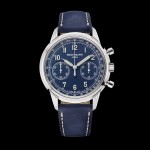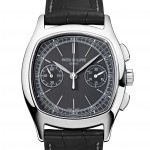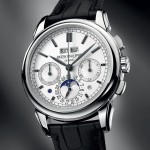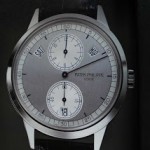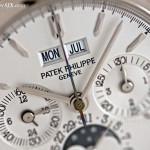Understanding Patek Philippe’s Legendary Chronograph Wristwatches Over the Century
Having previously been around Europe, Singapore is the first Asian stop for "Chronographs", an travelling exhibition of Patek Philippe chronographs. This is a showcase of 14 historical timepieces and 23 chronographs from the current range, providing a tangible timeline of Patek Philippe's rich history in chronographs.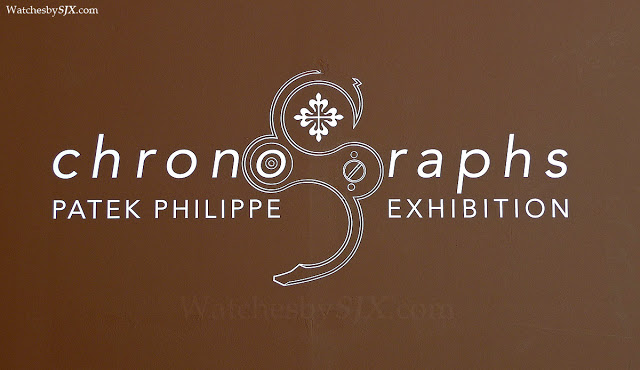
Open only for a day to clients and the media, “Chronographs” is a small but important show – Philippe and Thierry Stern were here to for the exhibition – that neatly traces the development of Patek Philippe’s chronographs starting over 150 years ago.
The evolution of the Patek Philippe chronograph perfectly illustrates its uninterrupted, consistent quality of watchmaking the Geneva house has practiced throughout its history, something none of its rivals can match. And the presence of the Sterns exemplify its family ownership, which is the other half of the Patek Philippe success story.
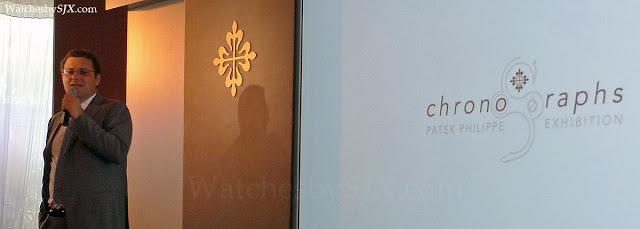 |
| Thierry Stern opening the exhibition |
Patek explains that its chronograph history can be divided into approximately four periods, with the first period that of the pocket watch.
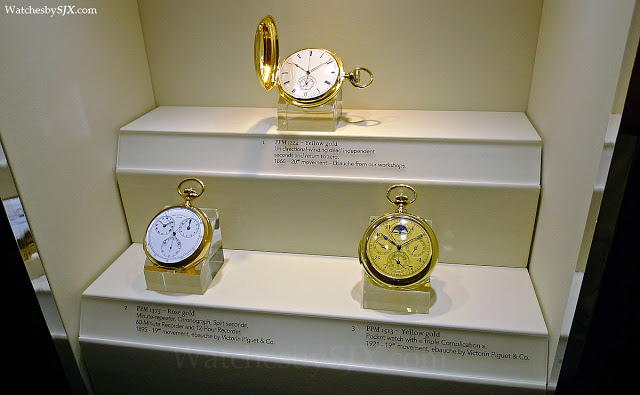
1856 saw the first Patek Philippe pocket watch with chronograph, while the oldest one on show dates to 1866.
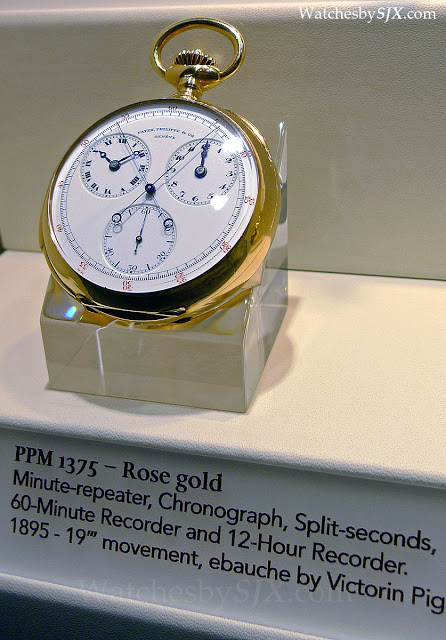
The exhibition also has a chronograph and minute repeating pocket watch from 1895, as well as a triple complication watch from 1921.
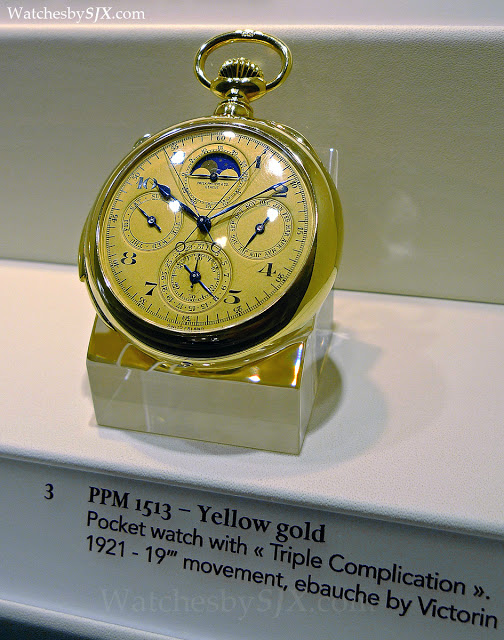
The second period is that of early to mid-20th century wristwatch chronographs, beginning in the 1920s. The first Patek Philippe split-seconds chronograph wristwatch came in 1923, and a year later the first chronograph was unveiled.
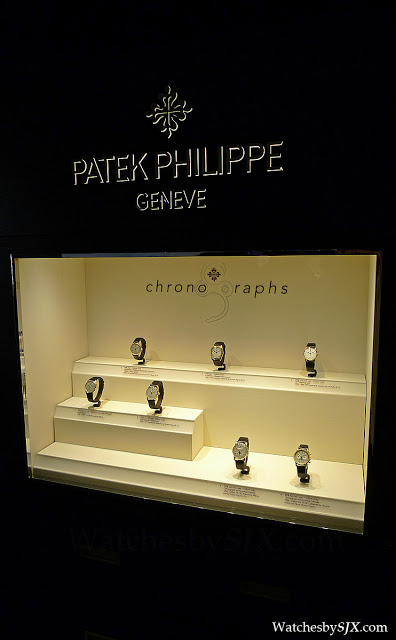
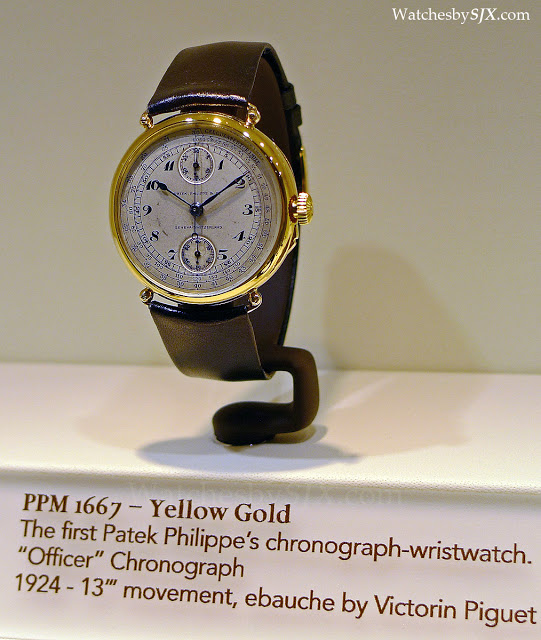
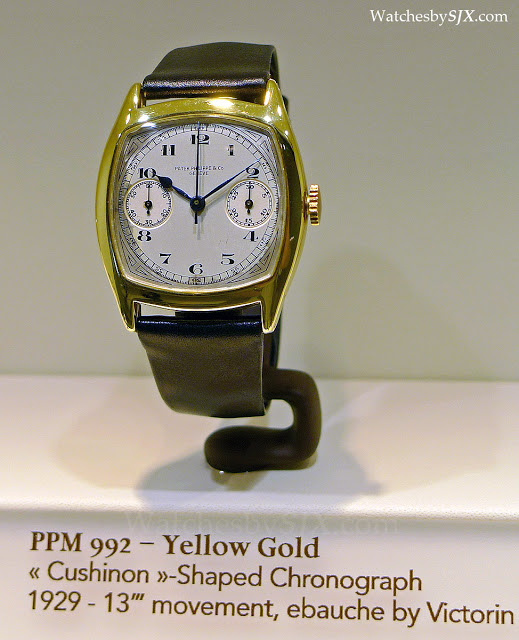
This period includes several specimens of the beautiful ref. 130, which was recently reissued thanks to a rediscovered trove of new old stock movements.
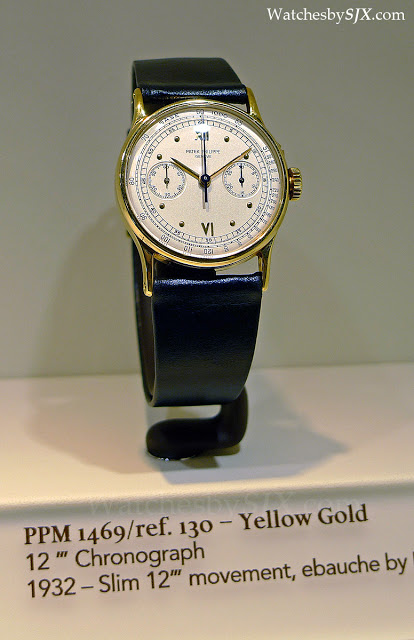
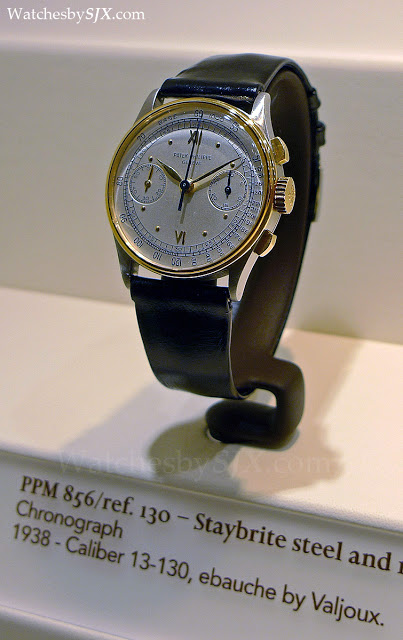
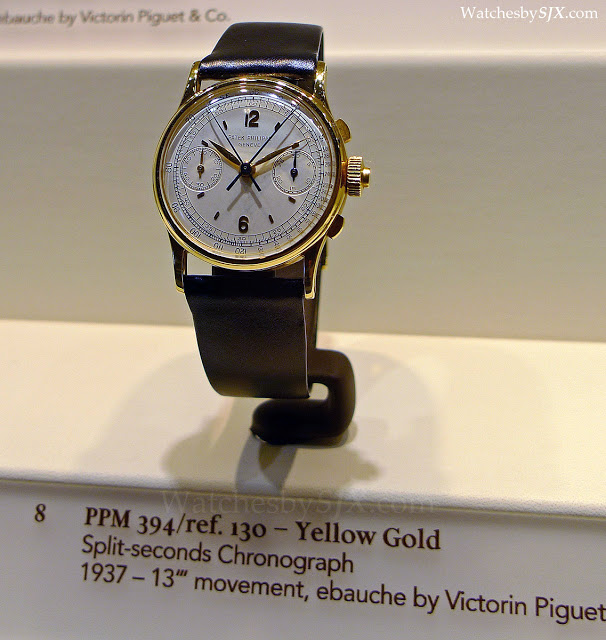
And the era peaks with the iconic ref. 2499 chronograph with perpetual calendar.
.jpg)
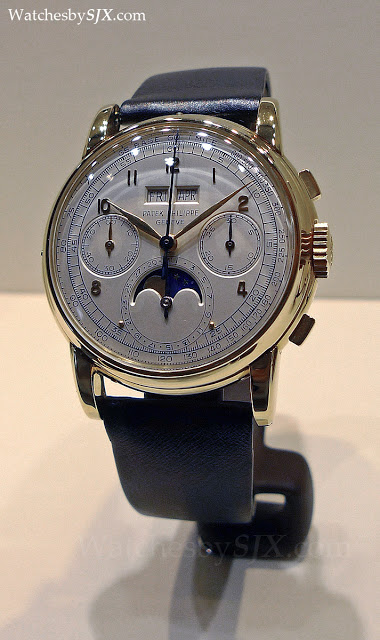
Next comes the third period of the Lemania-based CH 27-70, termed “25-year success story” by Patek Philippe.
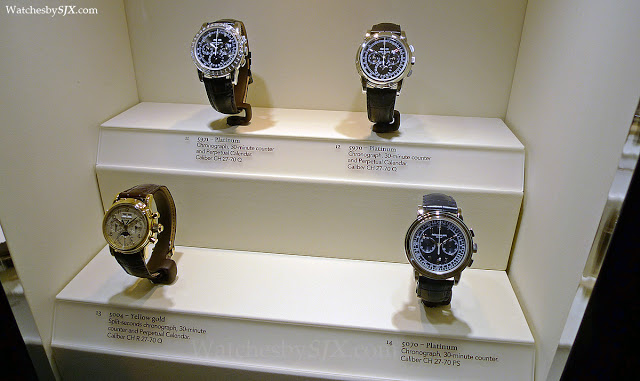
This starts in 1986 with the ref. 3970 and 3971 which succeeded the 2499.
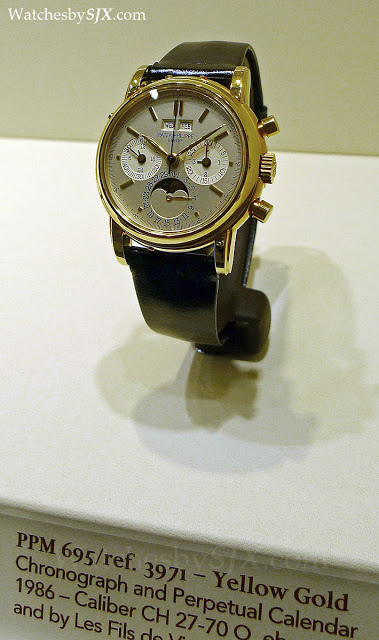
1995 then saw the addition of the ref. 5004 rattrapante chronograph with perpetual calendar.
.jpg)
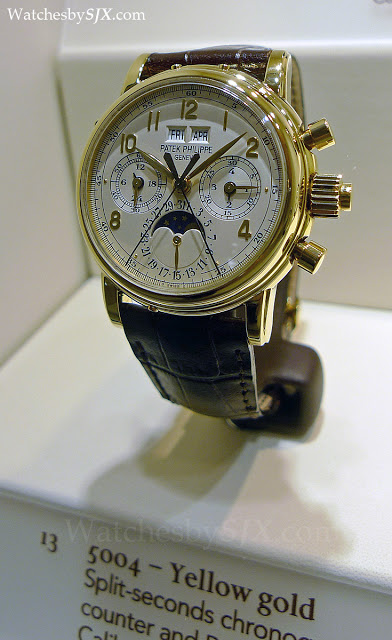
1998 was the year the ref. 5070 chronograph was unveiled.
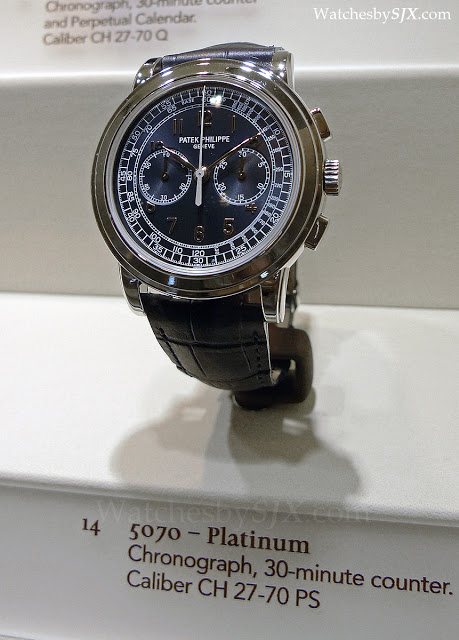
And the Lemania trio was completed in 2004 with the ref. 5970.
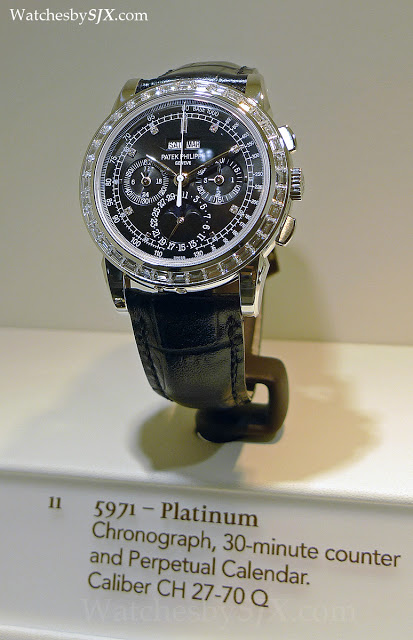
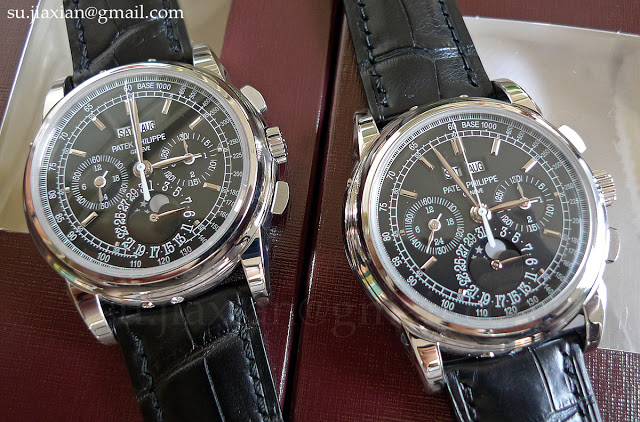
Last is the fourth period of the in-house calibres, totalling four basic calibres and eight movements variations in total. First of the in-house movements was the split-seconds CH 27-525 PS (based on an old Victorin Piguet ebauche design I believe), presented in the dimunitive, 33 mm ref. 5959 in 2005.
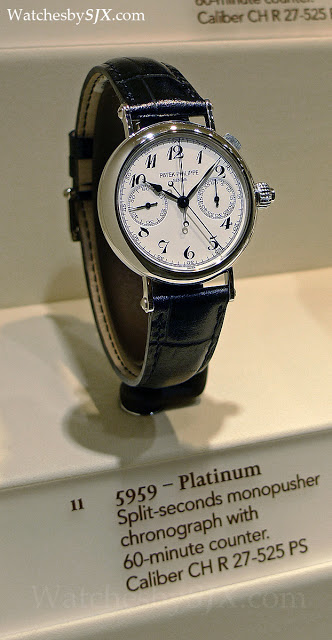
.jpg)
A year later the automatic CH 28-520 was launched. This is found in the Nautilus ref. 5980 – possibly the best sports chronograph available today – and with an additional annual calendar module in the ref. 5960.
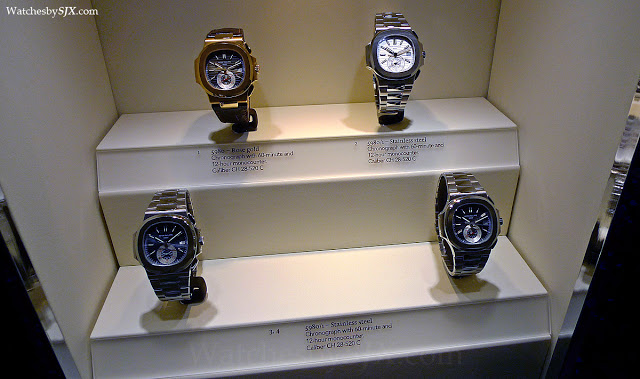
.jpg)
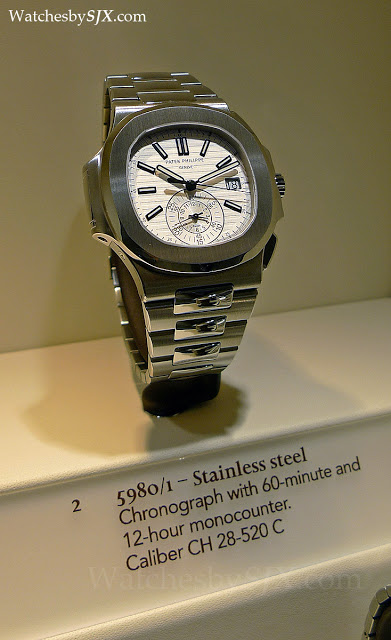
Unusually enough the Lemania-based CH 27 replacement the CH 29, was unveiled in 2009 in a ladies chronograph, the ref. 7071.
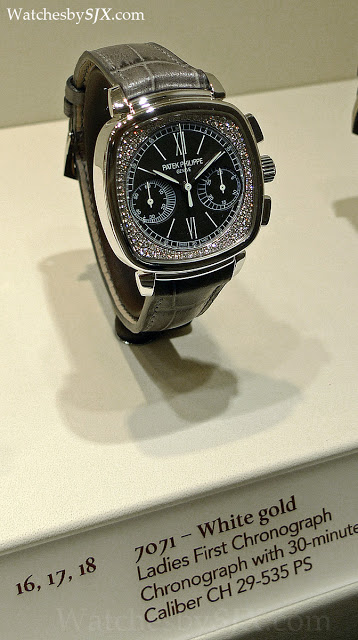
A year later it was presented in the men’s ref. 5170.
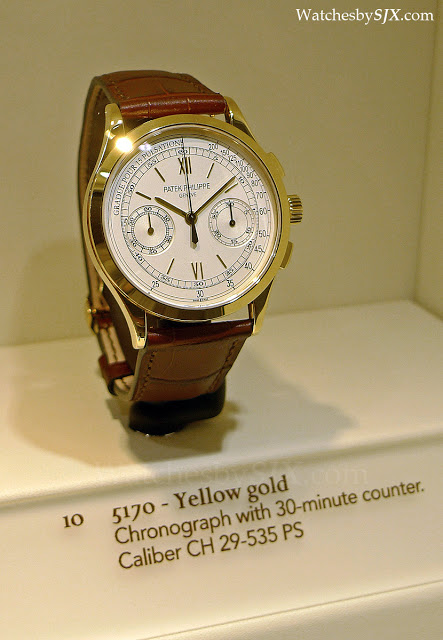
Then in 2010 a perpetual calendar module was added to the CH 27 split-seconds movement for the ref. 5951 with its distinctive red accents (a very unconvincing design in my opinion).
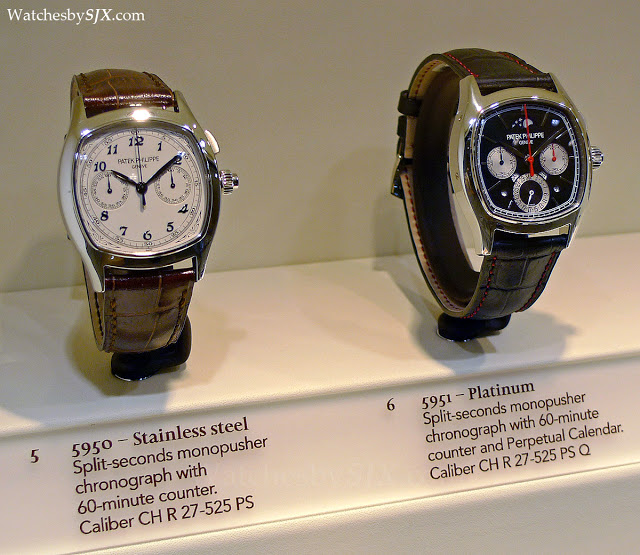 |
| Ref. 5951 on the right; the ref. 5950 on the left has the same movement as the ref. 5959 which it replaced |
The fifth iteration of the famous chronograph with perpetual calendar arrived in 2011. The ref. 5270 uses the in-house CH 29-535 PS Q and in some ways encapsulates the evolution of the Swiss watch industry from ebauche to in-house.
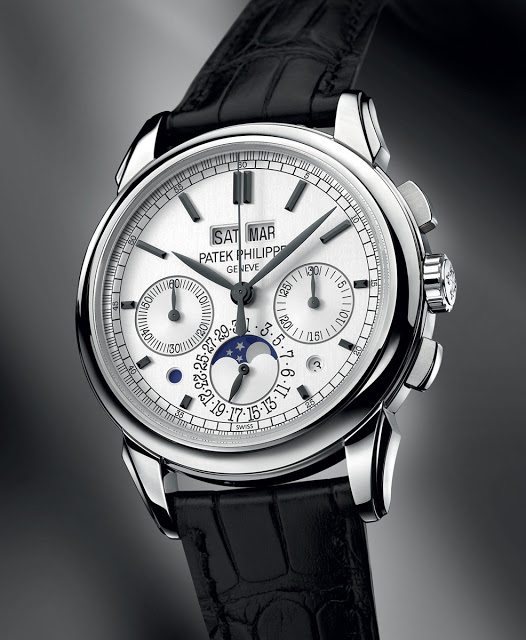
In the sam year Patek Philippe also unveiled the ref. 5208P, the second most complicated watch after the Sky Moon Tourbillon. This has a minute repeater, instantaneous perpetual and chronograph. Notably this is the only modular chronograph Patek Philippe has ever made.
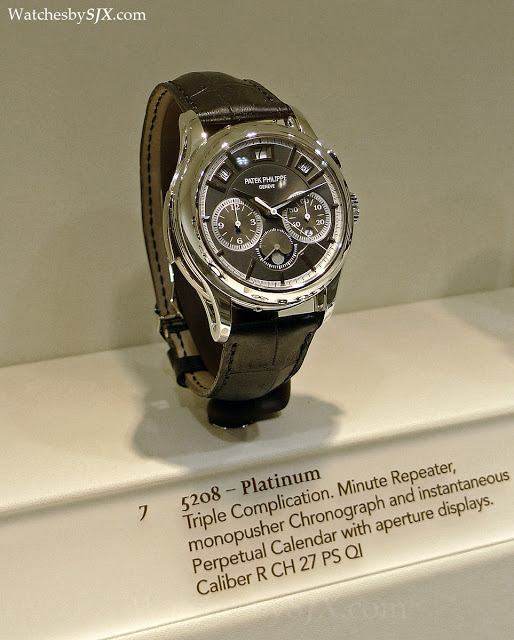
Earlier this year the latest watch to join this 150 year history was presented, the ref. 5204P with split-seconds chronograph and perpetual calendar. The movement, based on the CH 29, is beautifully conceived and executed but I dislike the luminous indices and hands.
.jpg)
.jpg)
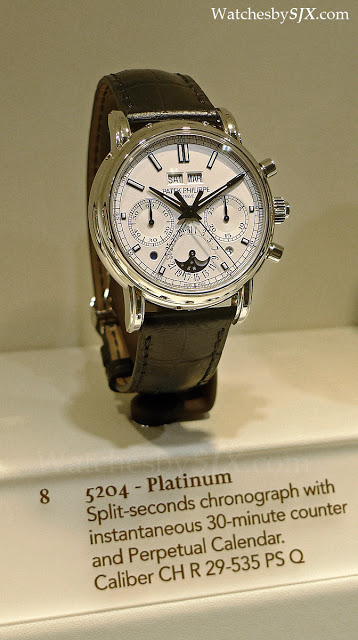
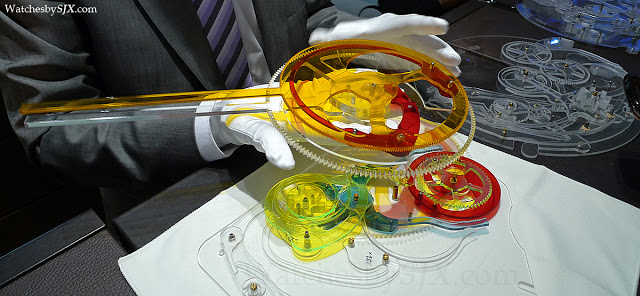 |
| A plastic model of the split-seconds isolator mechanism |
Also on show were the new products for 2012, including my favourite of the year, the tonneau-shaped ref. 5240J perpetual calendar.
.jpg) |
| 5240J Perpetual Calendar |
.jpg)
.jpg)
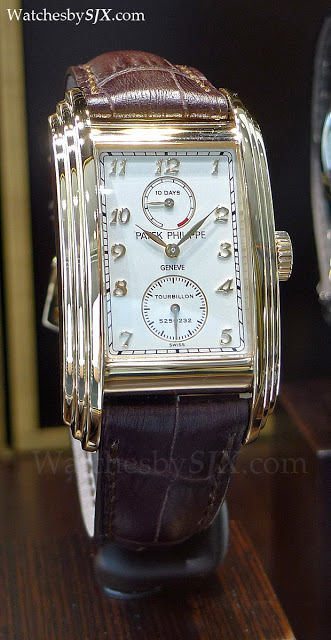 |
| 5101J Ten Days Tourbillon |
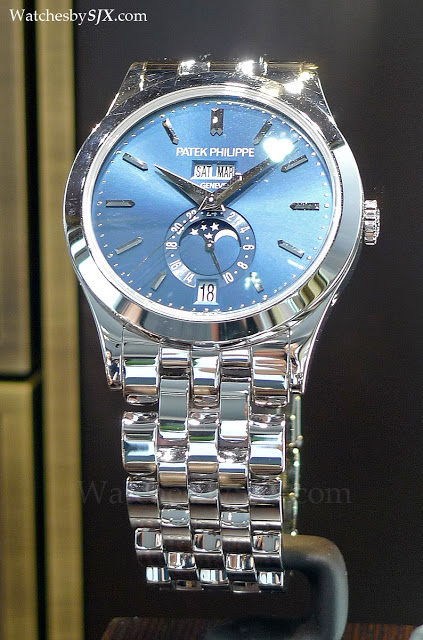 |
| 5396G Annual Calendar with blue dial and gold bracelet |
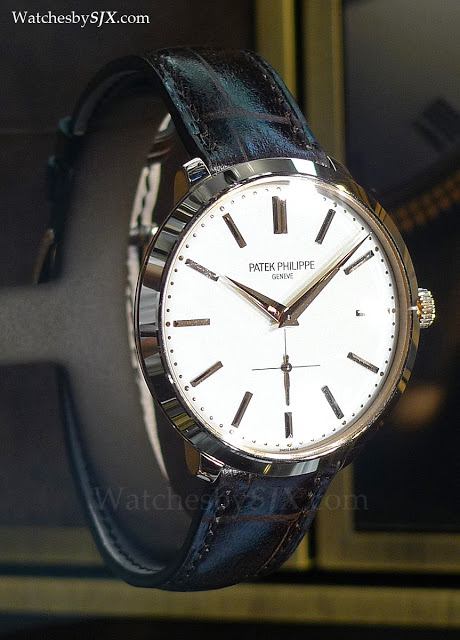 |
| Seventies inspired 5123R Calatrava |
 |
| Nautilus ref. 5726 Annual Calendar with new white dial |
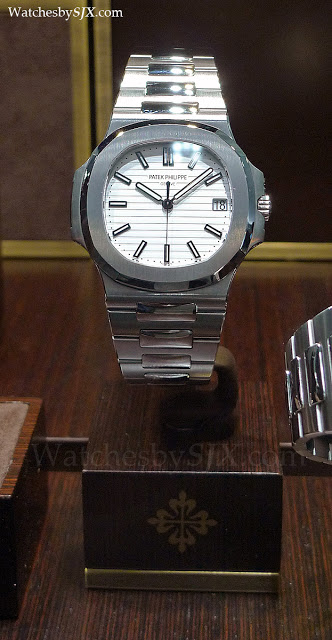 |
| Nautilus 5711 with white dial |
.jpg)
Several notable pieces launched in recent years were also included, the ref. 5235 annual calendar regulator being one of them.
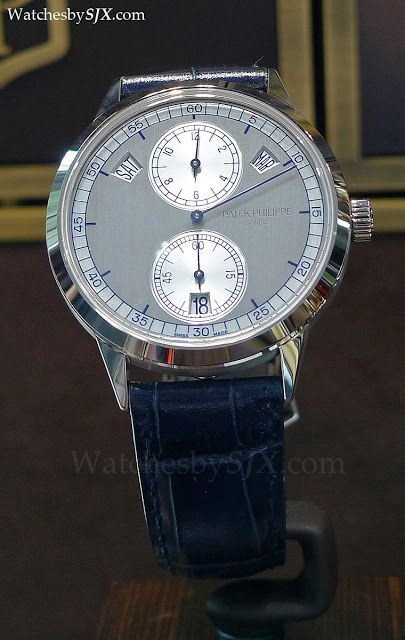 |
| 5235 Annual Calendar Regulator |
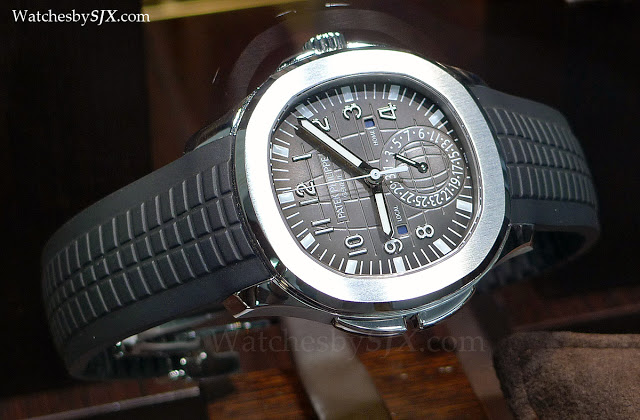 |
| Aquanaut Travel Time 5164A |
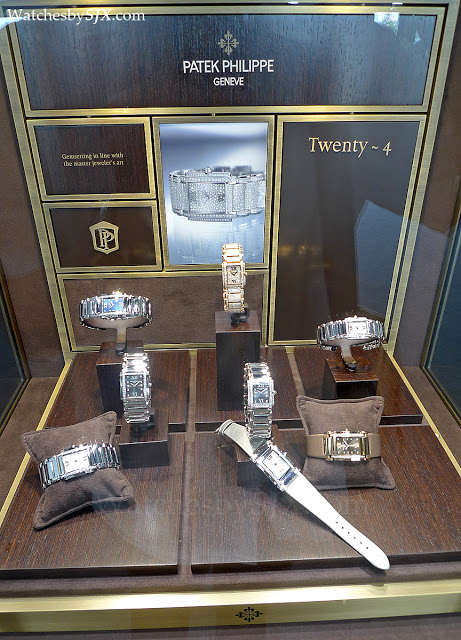 |
| The most successful Patek Philippe watch ever |
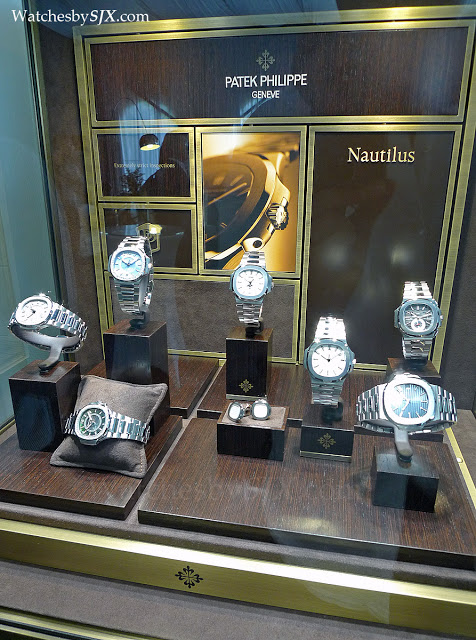
And there was a separate room to show some minute repeaters – what Patek exhibition is complete without repeaters? – SJX
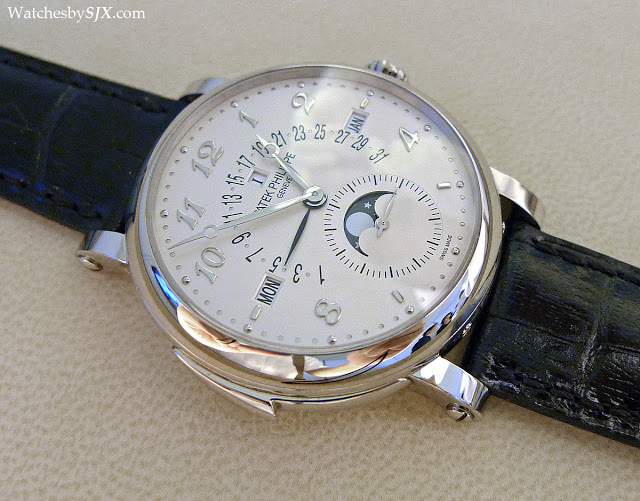 |
| 5213G repeater with perpetual and tourbillon |
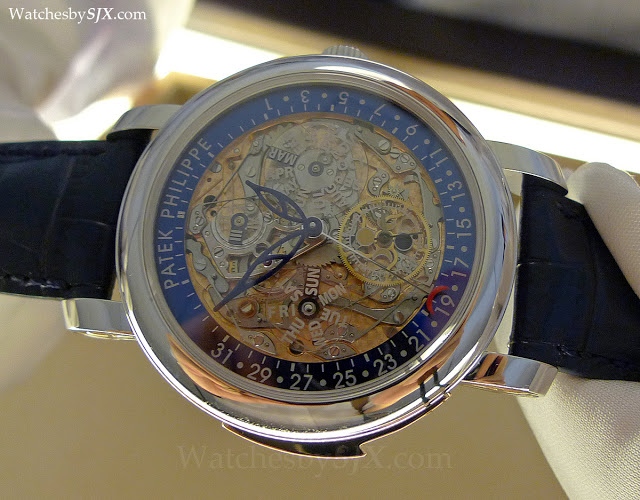 |
| The 5104P repeater – truly an acquired taste |

